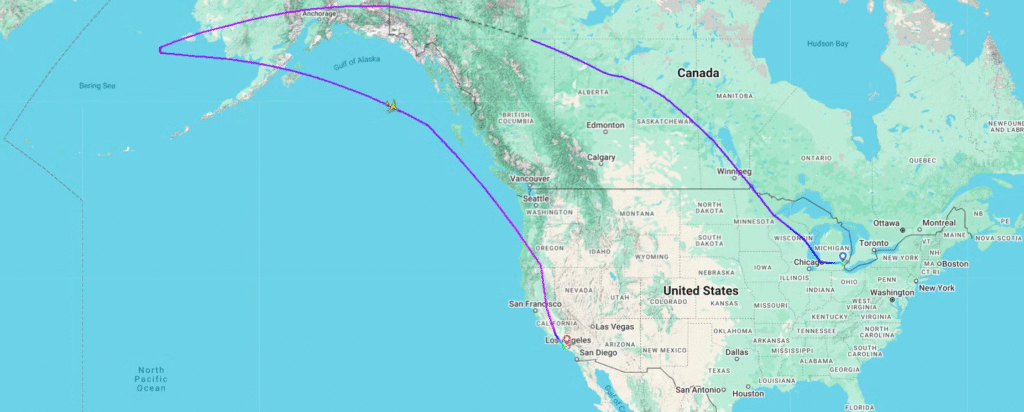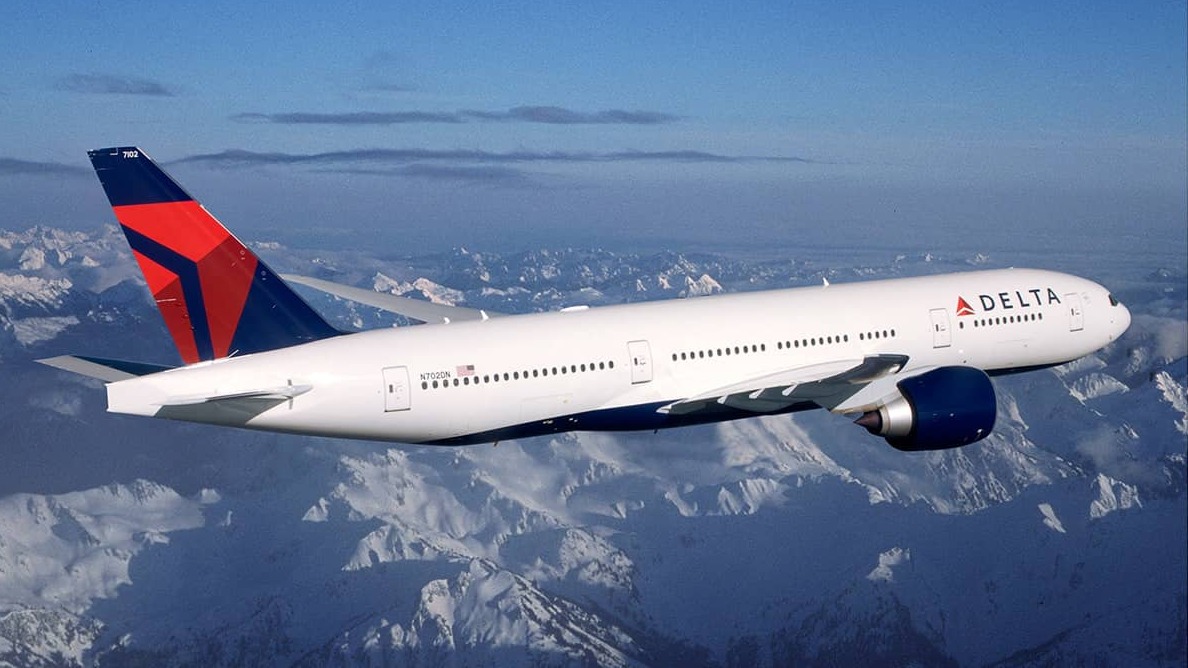On the night of May 27, 2025, what began as a routine transpacific journey soon evolved into a nerve-racking event at 38,000 feet. Delta Flight DL275 diverted LAX in a move that has since sparked intense discussions across aviation communities, forums, and even mainstream media.
The Airbus A350-900, hailed for its long-range performance and cutting-edge safety, was en route from Detroit Metropolitan Wayne County Airport (DTW) to Tokyo Haneda (HND) when a technical anomaly forced the aircraft to alter course mid-flight. With 287 lives onboard, including passengers and crew, the decision to land in Los Angeles International Airport (LAX) wasn’t just operational—it was a matter of life and safety.
This documentary-style article uncovers everything—from the technical factors to crew decision-making and passenger experience—to explain why delta flight dl275 diverted LAX and what it means for aviation safety today.
Flight Overview: DL275 – A Transpacific Workhorse

Delta Flight DL275 is a regularly scheduled long-haul route connecting the U.S. and Japan. Operated by Delta’s flagship wide-body, the Airbus A350-900, the aircraft is known for its fuel efficiency and comfort over long distances.
On this particular date, the aircraft involved was registration number N508DN, a relatively new unit in Delta’s fleet, equipped with Rolls-Royce Trent XWB engines. Scheduled for a roughly 13-hour flight, everything appeared normal upon departure.
Takeoff occurred smoothly at 8:55 PM local time from DTW, and the aircraft climbed to cruising altitude without incident. The weather was favorable, with clear skies expected for most of the journey across the North Pacific.
The Mid-Air Emergency: Technical Failure at Altitude
Approximately 6 hours into the flight, while cruising above the Bering Sea, the aircraft experienced an unexpected system alert—an anomaly in the engine anti-ice system on Engine 2. The anti-ice system, critical during high-altitude and low-temperature operations, ensures that ice does not build up on engine components, which could compromise airflow and performance.
According to cockpit reports and later confirmed by Delta engineers, there was a complete failure in the engine 2 anti-ice system. This wasn’t just a small hiccup—it meant that under certain atmospheric conditions, ice could accumulate within the engine nacelle, potentially leading to engine stall or worse.
Immediately after detecting the malfunction, the pilots performed a controlled descent from FL380 (38,000 feet) to a safer altitude to reduce the icing threat while simultaneously initiating communications with Delta’s operations control and air traffic control centers.
The cockpit declared an emergency as a precautionary measure, though the situation remained under control thanks to swift adherence to emergency protocols.
Why Delta Flight DL275 Diverted LAX Instead of Anchorage
Aviation experts and curious passengers on forums like Reddit and Twitter wondered why the crew opted for LAX, a destination significantly farther south, instead of closer international airports like Anchorage (ANC) or even Seattle (SEA).
There are multiple strategic reasons why delta flight dl275 diverted LAX:
- Aircraft Maintenance Capability
LAX is one of Delta’s major international hubs, equipped with A350-certified maintenance facilities and on-ground support for Rolls-Royce Trent XWB engines. If the aircraft had landed in Anchorage, it might have required a secondary ferry flight for repairs. - Weather Conditions
Los Angeles offered optimal landing weather at the time, with clear skies and mild temperatures, eliminating any further complications due to atmospheric instability. - Passenger Rebooking Support
As an international transit point, LAX has the infrastructure and resources to accommodate hundreds of diverted international passengers, rebook flights, and provide lodging and transport arrangements. - Crew Judgment and Fuel Range
At the time of the diversion, the aircraft still had sufficient fuel to make it safely to LAX with reserves. The flight crew, balancing safety, supportability, and logistics, made the judgment call to head to Southern California.
The Landing: Controlled, Safe, and Swift
Delta Flight DL275 touched down safely at LAX at 6:08 AM local time on May 28, 2025. Emergency services were on standby as a precaution, but there was no fire, crash, or structural damage.
Passengers reported that the descent was “steady” and “uneventful,” though the announcement from the flight deck informing them of the emergency situation led to understandable anxiety.
One passenger, posting anonymously on Reddit, wrote:
“The pilot was calm but serious. He said it was an issue with the engine anti-icing system. They were heading to LAX because it was warmer and safer for the aircraft. We didn’t panic, but we could feel the tension. The crew was amazing.”
Delta confirmed that all 287 passengers and 13 crew members deboarded safely and were provided with meal vouchers, hotel accommodations, and rebooking assistance.
Post-Incident Analysis: How Big Was the Risk?
According to aviation specialists, a failure of the engine anti-ice system can become critical, especially over the North Pacific where atmospheric icing is common.
Ice formation within an engine nacelle can disrupt airflow and potentially damage engine blades, risking shutdown or worse. While modern engines like the Trent XWB are robustly tested for such scenarios, redundancy in systems doesn’t mean risk is eliminated.
Delta, Airbus, and Rolls-Royce launched a joint investigation to determine the root cause. Preliminary findings suggested a sensor communication failure that prevented proper activation of the anti-ice heating elements in Engine 2.
The Federal Aviation Administration (FAA) also opened a standard inquiry due to the declared emergency, as is routine in such incidents.
Cost and Operational Impact
Industry experts estimated that the diversion likely cost Delta Air Lines upwards of $2.5 million. The breakdown includes:
- Fuel burn penalty due to the diversion
- Passenger accommodation and rebooking costs
- Delays to other aircraft operations
- Maintenance and repair evaluation
- Potential compensation claims under international passenger protection laws
Despite the cost, Delta’s immediate response and transparency were praised. The airline released a formal statement within 6 hours of the landing and maintained constant updates via their Twitter/X support account and website.
Passenger Safety: Delta’s Reputation Reinforced
While passengers experienced inconvenience, Delta’s decision to prioritize safety over schedule has reinforced its standing as a carrier that doesn’t take risks when it comes to in-air anomalies.
Social media sentiment was largely positive. Multiple flyers applauded the professionalism of the crew, particularly for their clear communication and calm demeanor.
A business traveler tweeted:
“My Tokyo trip was delayed, but I’d fly Delta again in a heartbeat. Pilots and crew did a great job. Safety first.”
What’s Next for DL275?
After technical assessments at LAX, the Airbus A350 involved underwent detailed inspection. As of June 1, 2025, the aircraft was cleared for flight following a system component replacement.
Delta resumed the DL275 route with a different aircraft and provided affected passengers a 15% discount code for future bookings as a goodwill gesture.
Final Thoughts: Lessons from the Sky
The story of how delta flight dl275 diverted LAX highlights several key takeaways for the aviation industry:
- Proactive Safety Over Reactive Measures
Identifying an issue before it becomes critical saved lives. - Importance of Hub-Based Diversions
Choosing an airport like LAX ensures better support in emergencies. - Flight Crew Preparedness
Human decisions, especially under pressure, are irreplaceable even in a technology-driven cockpit.
In the end, DL275’s diversion was not a story of failure but of effective risk management, training, and resilience. Aviation is an industry that often goes unnoticed when it works perfectly—but when things go wrong, it’s the preparation that makes the difference between disaster and safe arrival.
Did You Know?
- The Rolls-Royce Trent XWB engine used on the A350-900 is one of the most fuel-efficient large aero engines in service today.
- Aircraft icing is among the top 10 threats identified by the FAA for high-altitude flights.
- LAX handles more diverted international flights than any other West Coast airport due to its wide-body maintenance facilities.
People Also Ask:
Q: Was anyone injured when Delta flight DL275 diverted LAX?
A: No, there were no injuries reported. All passengers and crew landed safely and were assisted by Delta staff.
Q: How long was DL275 in the air before the diversion?
A: Approximately 12 hours and 15 minutes before landing at LAX.
Q: Will DL275 continue operating after this incident?
A: Yes, the route continues to operate with different aircraft while the original underwent repairs and system checks.
Conclusion
The incident where delta flight dl275 diverted LAX is a clear reminder that air travel, despite its complexity, is one of the safest modes of transportation—precisely because of the systems and professionals in place to handle emergencies.
This wasn’t a disaster—it was a textbook example of aviation safety working exactly as intended.


Leave a Reply